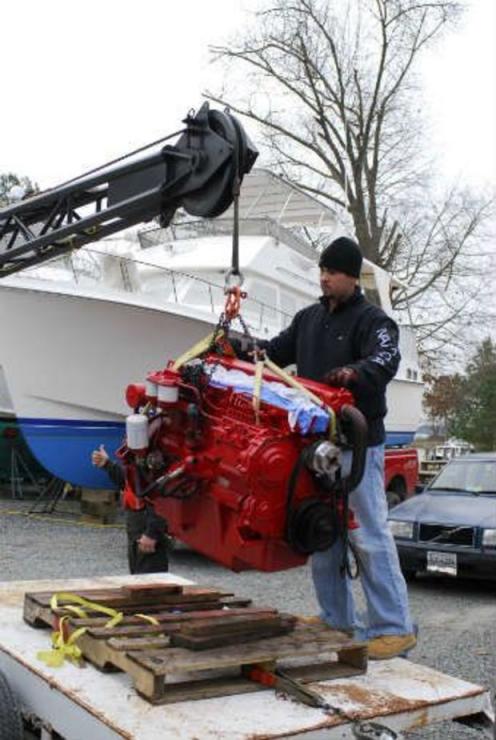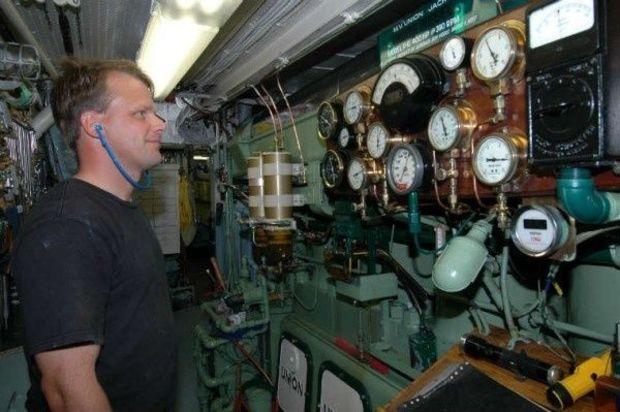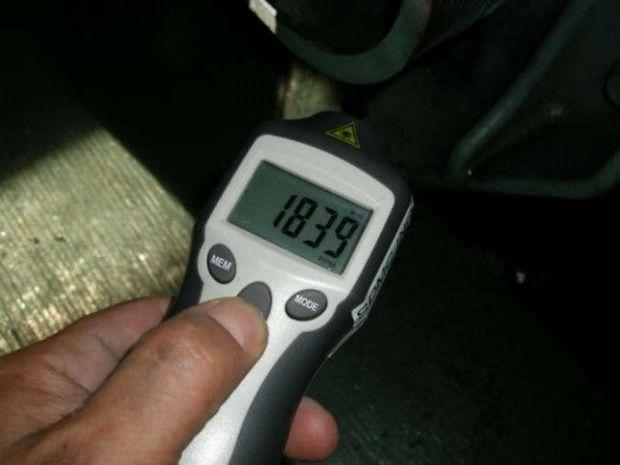In part one of this two-part series I discussed horsepower, its characteristics, and the measurement thereof. In part two, we’ll take a closer look at horsepower’s cousin, torque.
Like horsepower, torque is also a measure of energy. However, it has nothing to do with time; it could be imparted over one minute or one year. If horsepower is energy measured over time, torque could be thought of as the process for transforming or converting that energy into a useful motion, one that twists, as an axle or propeller shaft.

The definition of torque or the understanding thereof, can be a bit difficult to grasp. For illustrative purposes, imagine torque is simply a force in pounds multiplied by distance. You’ve almost certainly demonstrated this yourself by using a longer wrench or an extension pipe slipped over a socket wrench (the “extension” is used in this case on the handle; it should not be confused with extensions used on the driven or socket end of the wrench) when removing a stubborn nut or bolt, or a piece of pipe used on the handle of a stiff seacock. The extension multiplies the torque applied to the fastener by virtue of the length or distance that the force is applied by your hand from the point where it’s applying twisting motion.
Ten pounds of force applied to a one-foot long wrench imparts 10 pound-feet (it’s
pound-feet in this case by the way, not foot-pounds, which represents work or an expenditure of energy) of torque, or 13.5 Newton meters/Nm in the metric system, while 10 pounds of force applied to a two-foot long extension enables you to subject the fastener to 20 pound-feet of torque or 27 Newton meters. It’s one of those rare cases where Mother Nature seems to be offering up a free lunch.
Engine torque is measured using the following formula: (5,252 x hp) ÷ rpm. In order to get more power from an engine, and because horsepower is a measurement of power over time, it would seem then that one way to squeeze more of that power from an engine would be to make it turn faster. In fact, this approach works well. It’s why the small, light yet powerful engine on my Italian motorcycle spins up to 8000 rpm, to develop more power from a smaller power plant package. That isn’t a free lunch; turning engines at higher speeds comes with its own set of side effects, increased wear, decreased longevity, and increased cost of engineering to name just a few.

Math-minded folks will have noticed in the above formula that as rpm increases, torque decreases, and there goes the free lunch, yet again. This is why traditional, large,
slow-turning diesels deliver mountains of torque. It’s why my Ford F-250 Powerstroke diesel can haul a 4000-pound boat up a ramp at idle speed (with a little help from its reduction gears—I’ll get to that in moment) and why the 1940 vintage former tugboat, turned fishing-charter vessel,
Union Jack is powered by a six-cylinder, 400-hp engine that turns at 340 rpm and produces a whopping 6180 pound-feet of torque. It’s a heavy slow turner, weighing in at 38,000 pounds. By way of comparison, a modern, high-speed 400-hp diesel may produce around 600 pound-feet of torque (measured at the engine’s crankshaft output) and weigh somewhere around 1000 pounds.
Does this mean that if you want torque, which is what really turns the prop, then you must have a large, heavy diesel? The short answer is “no,” because while Mother Nature can’t be fooled; she can be cheated. What if we could keep the engine rpm high, to maintain horsepower, while slowing down the shaft/prop rpm in order to coax more torque out of the equation? In fact, this is done regularly by using a component known as a reduction gear, which is bolted to and often appears to be part of the transmission. Reduction gears do just that, reduce rpm at the shaft using gears, somewhat like the transmission in the Ford F-250 mentioned above, while allowing the engine to continue to turn at higher rpm.

For example, a 150-hp engine that turns at 4000 rpm produces 197 pound-feet of torque. Not bad for a small, light, high-speed diesel engine. However, with a 2:1 reduction gear installed, the shaft rpm will be reduced to 2000 rpm, making the torque available to the propeller 394 pound-feet, a significant increase. There are tradeoffs for the reduction gear and rules that must be followed, however (I’ll save discussion of those for another column). In general, the price paid for this gear magic is two-fold.
First, there’s the inefficiency and friction induced by the reduction gear, which may account for a three- to five-percent “loss.” Second, the reduction gear adds weight, complexity, and expense to the installation. In the end, however, it’s a net gain and one that many engine manufacturers and boat builders embrace. It’s why smaller, lighter high-speed diesels have become popular in the past 20 years. While heavy, slow-turning diesel engines are desirable in many ways, among other things, they often last a very long time. They also have drawbacks and as such, the higher-speed engine and reduction gear combination simply makes good sense in many, but not all, applications.
When comparing engines and power output ensure like units and measurement methods are being used and remember, it’s not about horsepower alone.
About the Author: Former boatyard manager, technical writer, and lecturer, Steve D’Antonio, consults for boat owners and buyers, boat builders, and others in the industry. Visit
stevedmarine.com for his weekly technical columns.
 The definition of torque or the understanding thereof, can be a bit difficult to grasp. For illustrative purposes, imagine torque is simply a force in pounds multiplied by distance. You’ve almost certainly demonstrated this yourself by using a longer wrench or an extension pipe slipped over a socket wrench (the “extension” is used in this case on the handle; it should not be confused with extensions used on the driven or socket end of the wrench) when removing a stubborn nut or bolt, or a piece of pipe used on the handle of a stiff seacock. The extension multiplies the torque applied to the fastener by virtue of the length or distance that the force is applied by your hand from the point where it’s applying twisting motion.
Ten pounds of force applied to a one-foot long wrench imparts 10 pound-feet (it’s pound-feet in this case by the way, not foot-pounds, which represents work or an expenditure of energy) of torque, or 13.5 Newton meters/Nm in the metric system, while 10 pounds of force applied to a two-foot long extension enables you to subject the fastener to 20 pound-feet of torque or 27 Newton meters. It’s one of those rare cases where Mother Nature seems to be offering up a free lunch.
Engine torque is measured using the following formula: (5,252 x hp) ÷ rpm. In order to get more power from an engine, and because horsepower is a measurement of power over time, it would seem then that one way to squeeze more of that power from an engine would be to make it turn faster. In fact, this approach works well. It’s why the small, light yet powerful engine on my Italian motorcycle spins up to 8000 rpm, to develop more power from a smaller power plant package. That isn’t a free lunch; turning engines at higher speeds comes with its own set of side effects, increased wear, decreased longevity, and increased cost of engineering to name just a few.
The definition of torque or the understanding thereof, can be a bit difficult to grasp. For illustrative purposes, imagine torque is simply a force in pounds multiplied by distance. You’ve almost certainly demonstrated this yourself by using a longer wrench or an extension pipe slipped over a socket wrench (the “extension” is used in this case on the handle; it should not be confused with extensions used on the driven or socket end of the wrench) when removing a stubborn nut or bolt, or a piece of pipe used on the handle of a stiff seacock. The extension multiplies the torque applied to the fastener by virtue of the length or distance that the force is applied by your hand from the point where it’s applying twisting motion.
Ten pounds of force applied to a one-foot long wrench imparts 10 pound-feet (it’s pound-feet in this case by the way, not foot-pounds, which represents work or an expenditure of energy) of torque, or 13.5 Newton meters/Nm in the metric system, while 10 pounds of force applied to a two-foot long extension enables you to subject the fastener to 20 pound-feet of torque or 27 Newton meters. It’s one of those rare cases where Mother Nature seems to be offering up a free lunch.
Engine torque is measured using the following formula: (5,252 x hp) ÷ rpm. In order to get more power from an engine, and because horsepower is a measurement of power over time, it would seem then that one way to squeeze more of that power from an engine would be to make it turn faster. In fact, this approach works well. It’s why the small, light yet powerful engine on my Italian motorcycle spins up to 8000 rpm, to develop more power from a smaller power plant package. That isn’t a free lunch; turning engines at higher speeds comes with its own set of side effects, increased wear, decreased longevity, and increased cost of engineering to name just a few.
 Math-minded folks will have noticed in the above formula that as rpm increases, torque decreases, and there goes the free lunch, yet again. This is why traditional, large, slow-turning diesels deliver mountains of torque. It’s why my Ford F-250 Powerstroke diesel can haul a 4000-pound boat up a ramp at idle speed (with a little help from its reduction gears—I’ll get to that in moment) and why the 1940 vintage former tugboat, turned fishing-charter vessel, Union Jack is powered by a six-cylinder, 400-hp engine that turns at 340 rpm and produces a whopping 6180 pound-feet of torque. It’s a heavy slow turner, weighing in at 38,000 pounds. By way of comparison, a modern, high-speed 400-hp diesel may produce around 600 pound-feet of torque (measured at the engine’s crankshaft output) and weigh somewhere around 1000 pounds.
Does this mean that if you want torque, which is what really turns the prop, then you must have a large, heavy diesel? The short answer is “no,” because while Mother Nature can’t be fooled; she can be cheated. What if we could keep the engine rpm high, to maintain horsepower, while slowing down the shaft/prop rpm in order to coax more torque out of the equation? In fact, this is done regularly by using a component known as a reduction gear, which is bolted to and often appears to be part of the transmission. Reduction gears do just that, reduce rpm at the shaft using gears, somewhat like the transmission in the Ford F-250 mentioned above, while allowing the engine to continue to turn at higher rpm.
Math-minded folks will have noticed in the above formula that as rpm increases, torque decreases, and there goes the free lunch, yet again. This is why traditional, large, slow-turning diesels deliver mountains of torque. It’s why my Ford F-250 Powerstroke diesel can haul a 4000-pound boat up a ramp at idle speed (with a little help from its reduction gears—I’ll get to that in moment) and why the 1940 vintage former tugboat, turned fishing-charter vessel, Union Jack is powered by a six-cylinder, 400-hp engine that turns at 340 rpm and produces a whopping 6180 pound-feet of torque. It’s a heavy slow turner, weighing in at 38,000 pounds. By way of comparison, a modern, high-speed 400-hp diesel may produce around 600 pound-feet of torque (measured at the engine’s crankshaft output) and weigh somewhere around 1000 pounds.
Does this mean that if you want torque, which is what really turns the prop, then you must have a large, heavy diesel? The short answer is “no,” because while Mother Nature can’t be fooled; she can be cheated. What if we could keep the engine rpm high, to maintain horsepower, while slowing down the shaft/prop rpm in order to coax more torque out of the equation? In fact, this is done regularly by using a component known as a reduction gear, which is bolted to and often appears to be part of the transmission. Reduction gears do just that, reduce rpm at the shaft using gears, somewhat like the transmission in the Ford F-250 mentioned above, while allowing the engine to continue to turn at higher rpm.
 For example, a 150-hp engine that turns at 4000 rpm produces 197 pound-feet of torque. Not bad for a small, light, high-speed diesel engine. However, with a 2:1 reduction gear installed, the shaft rpm will be reduced to 2000 rpm, making the torque available to the propeller 394 pound-feet, a significant increase. There are tradeoffs for the reduction gear and rules that must be followed, however (I’ll save discussion of those for another column). In general, the price paid for this gear magic is two-fold.
First, there’s the inefficiency and friction induced by the reduction gear, which may account for a three- to five-percent “loss.” Second, the reduction gear adds weight, complexity, and expense to the installation. In the end, however, it’s a net gain and one that many engine manufacturers and boat builders embrace. It’s why smaller, lighter high-speed diesels have become popular in the past 20 years. While heavy, slow-turning diesel engines are desirable in many ways, among other things, they often last a very long time. They also have drawbacks and as such, the higher-speed engine and reduction gear combination simply makes good sense in many, but not all, applications.
When comparing engines and power output ensure like units and measurement methods are being used and remember, it’s not about horsepower alone.
About the Author: Former boatyard manager, technical writer, and lecturer, Steve D’Antonio, consults for boat owners and buyers, boat builders, and others in the industry. Visit stevedmarine.com for his weekly technical columns.
For example, a 150-hp engine that turns at 4000 rpm produces 197 pound-feet of torque. Not bad for a small, light, high-speed diesel engine. However, with a 2:1 reduction gear installed, the shaft rpm will be reduced to 2000 rpm, making the torque available to the propeller 394 pound-feet, a significant increase. There are tradeoffs for the reduction gear and rules that must be followed, however (I’ll save discussion of those for another column). In general, the price paid for this gear magic is two-fold.
First, there’s the inefficiency and friction induced by the reduction gear, which may account for a three- to five-percent “loss.” Second, the reduction gear adds weight, complexity, and expense to the installation. In the end, however, it’s a net gain and one that many engine manufacturers and boat builders embrace. It’s why smaller, lighter high-speed diesels have become popular in the past 20 years. While heavy, slow-turning diesel engines are desirable in many ways, among other things, they often last a very long time. They also have drawbacks and as such, the higher-speed engine and reduction gear combination simply makes good sense in many, but not all, applications.
When comparing engines and power output ensure like units and measurement methods are being used and remember, it’s not about horsepower alone.
About the Author: Former boatyard manager, technical writer, and lecturer, Steve D’Antonio, consults for boat owners and buyers, boat builders, and others in the industry. Visit stevedmarine.com for his weekly technical columns.